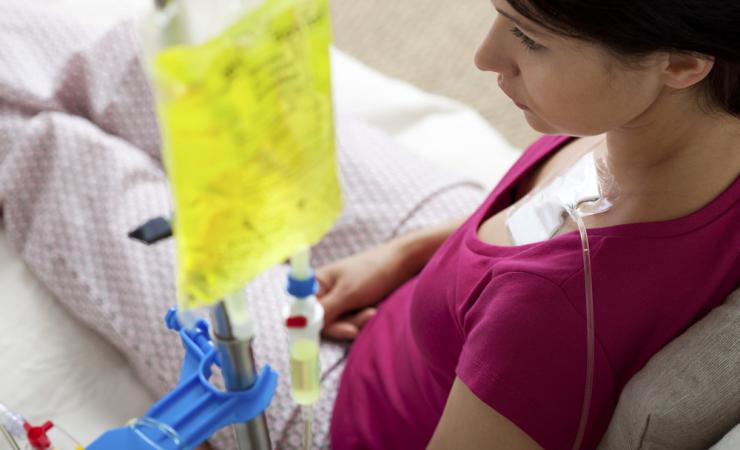A team of researchers from the University Hospital of Lausanne, the Swiss Institute of Bioinformatics and the University of Zurich, all part of the IMI-funded IMMUCAN project, has produced a web-based tool that allows huge volumes of data, taken from imaging of tumours, to be speedily analysed to help decide the most representative part of the tumour to further study and understand its unique microenvironment.
As part of the project, which will collect and analyse tumour samples of up to 3,000 patients, the researchers wanted to find innovative ways to use imaging data to help select parts of tumours that contain both cancer cells and immune cells, their interactions and adjacent activity, to better understand what's going on at a microscopic level, which is different for every patient. Essentially, highly-personalised tumour profiling.
How to choose where to look
A type of imaging called multiplex immunofluorescence (mIF), generates images of whole tumour sections. However, this type of imaging is limited by a low number of important markers that it can detect, with only seven markers detectable out of a possible 25,000+.
That’s why another type of imaging, called imaging mass cytometry (IMC) is used to create highly descriptive images of smaller sections of tumour. Daniel Schulz, a researcher at Zurich University and member of the Broad Profiling team that carried out the research, explains: “A tumour section is a three-dimensional piece of tissue. But we don’t have good ways to analyse large three-dimensional structures at sufficient throughput - meaning that with thousands of samples that need to be processed, some are not fast enough and would represent a significant bottleneck in the pipeline."
"So we cut it into very thin slices for microscopic analysis assuming that the slice is pretty much representative of the big structure. And then on that section, we identify regions which have interesting immune cells and a mix of tumour cells to zoom into those with our multiplex, high-dimensional method - the IMC.”
The problem, however, is that it is difficult to decide which bits of the sectioned tumour should be singled out for IMC imaging. Researchers, essentially, have to start out blind. To overcome this problem, the team built a webtool that allows them to take the mIF image and derive a set of pre-calculated statistics like tumour content and immune cell content, for all possible regions of the tumour. This then helps focus on the best regions of interest.
“The tool allows us to ‘zoom in’ on the whole tumour image to identify regions of interest based on the image and the statistics,” says Dr Schulz, whose collaborators are a mix of biologists, bioinformaticians and software builders. “We can then select regions, usually three or four, that contain a certain set of immune cells, and which capture the immune cell heterogeneity present in individual tumours. We can then download the data and use it to retrieve the coordinates for measurements with IMC.”
Google Maps for tumours
The interface basically enables you to log in and to browse a tumour section like you would browse a section of Google maps. “You know how on Google Maps how you can turn on ‘show restaurants’ or ‘show shopping malls’? Now we can browse around tumour cells and look at certain parts or disable other parts, and try to identify where we should measure.”
“In this quantity, and the way we are doing it, has never been done before,” says Dr Schulz. “There are tools to do it but they are not web-based and not suited for our throughput. With our tools we can select regions in five to ten minutes, which is incredibly fast.”
Pathologists look at staining, which is a method of colouring certain properties of tumour cells to make deductions about the tumour makeup and interactions. Pathologists are trained to glean a lot of information from the images, but it doesn’t necessarily offer the level of detail that would be necessary for very individualised treatment.
“The whole idea of all of our efforts is to be able to stratify patients into different groups. Breast cancer patients, for example, are put into five groups – but we believe there might be much more fine-grained grouping which means you have to personalise the treatment much more. In IMMUCAN we are primarily gathering this information and then, with the biomarkers, we are going to look at stratification, and at which of the patients actually respond to a certain treatment.”
IMMUCAN is supported by the Innovative Medicines Initiative, a partnership between the European Union and the European pharmaceutical industry.
